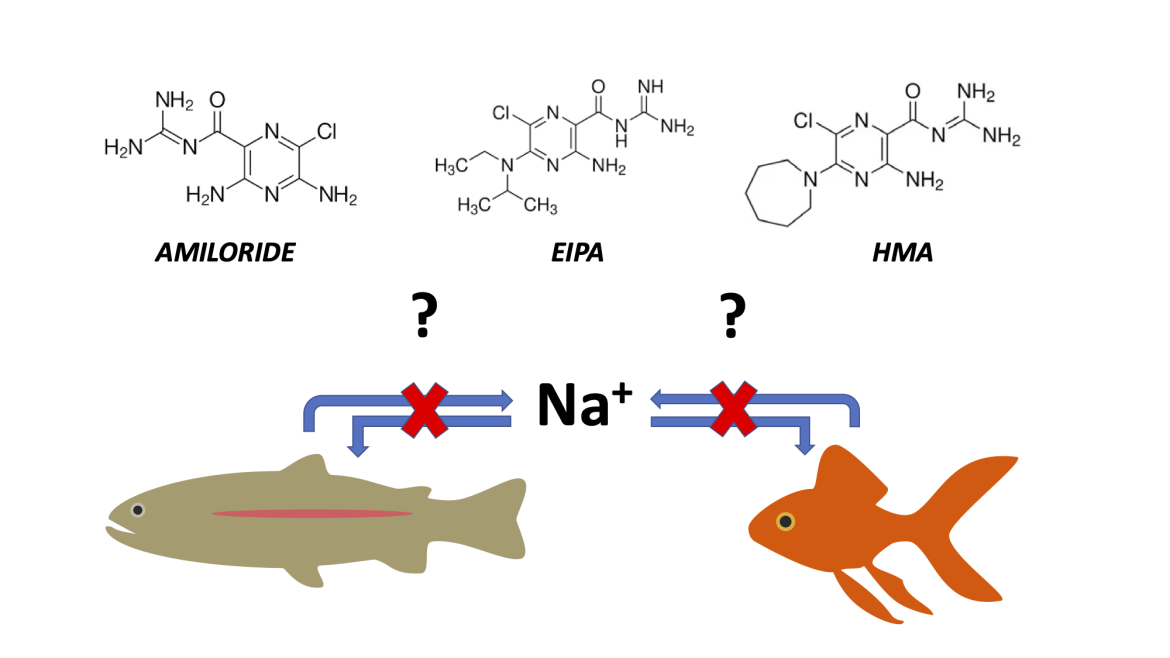
Abstract
There is a consensus that electroneutral Na+/H+ exchangers (NHEs) are important in branchial Na+ uptake in freshwater fish. There is also widespread belief, based on mammalian data, that EIPA [5-(N-ethyl-N-isopropyl)-amiloride]], and HMA [5-(N,N-hexamethylene)-amiloride)] are more potent and specific in blocking Na+ uptake than amiloride. We evaluated this idea by testing the three drugs at 10−7 to 10−4 M, i.e. 0.1 to 100 μM in two model species, rainbow trout (Oncorhynchus mykiss) and goldfish (Carassius auratus), using 22Na+ to measure unidirectional Na+ influx and efflux rates. In both species, the potency order for inhibiting unidirectional Na+ influx was HMA > amiloride > EIPA (IC50 values in the 10–70 μM range), very different from in mammals. At 100 μM, all three drugs inhibited Na+ influx by >90% in both species, except for amiloride in goldfish (65%). However, at 60–100 μM, all three drugs also stimulated unidirectional Na+ efflux rates, indicating non-specific effects. In trout, HMA and EIPA caused significant increases (2.1- to 2.3-fold) in efflux rates, whereas in goldfish, significant efflux elevations were greater (3.1- to 7.2-fold) with all three drugs. We conclude that the inhibitory potency profile established in mammals does not apply to the NHEs in fish gills, that non-specific effects on Na+ efflux rates are a serious concern, and that EIPA and HMA offer no clear benefits in terms of potency or specificity. Considering its much lower cost, we recommend amiloride as the drug of choice for in vivo experiments on freshwater fishes.